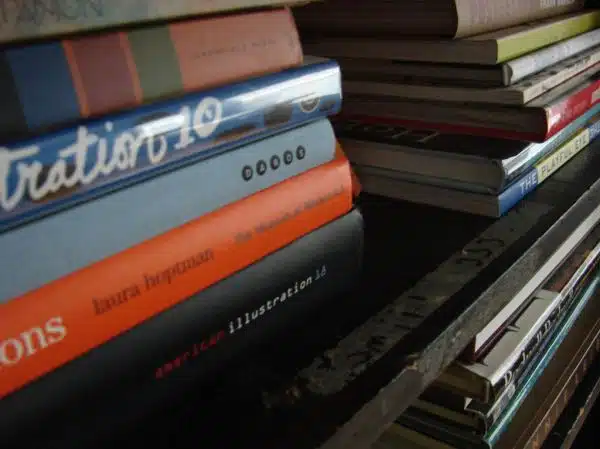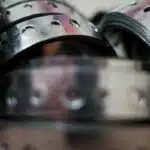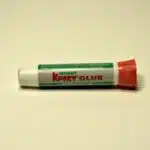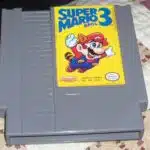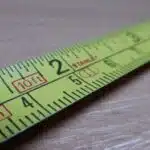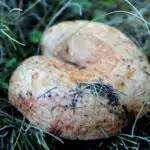Tape residue is a common problem that many people face when attempting to remove tape from various surfaces. Whether it be from walls, windows, or furniture, tape residue can be unsightly and difficult to remove. As an expert in tape residue removal, I have developed effective methods for easily removing this stubborn adhesive without damaging the underlying surface.
Removing tape residue requires both patience and the right tools. The first step in successful removal is to identify the type of surface you are working with and the type of tape residue that needs to be removed. From there, you can choose the appropriate method for removal, whether it be using household items such as vinegar or rubbing alcohol, or specialized products designed specifically for this purpose. With my expertise and guidance, anyone can easily remove tape residue and restore their surfaces to their original state.
Identifying The Type Of Surface
As a tape residue removal expert, I have seen it all when it comes to stubborn adhesive stains left behind on various surfaces. From walls to floors and even fabrics, tape residue can be a nuisance to remove if not approached with the correct technique. The first step in removing tape residue is identifying the type of surface you are working with.
Different surface types require different methods of removal as some may be more sensitive than others. For instance, removing tape residue from a painted wall may require a gentler approach as opposed to removing it from glass surfaces. It is important to identify the surface type before proceeding with any cleaning method as using the wrong technique can cause irreversible damage.
Another crucial aspect to consider when removing tape residue is the type of adhesive used on the tape. Different adhesives have varying degrees of stickiness and may react differently to certain solvents or cleaning agents. For example, some tapes may leave behind a sticky residue while others dry up and become flaky over time. Understanding the adhesive type will help in choosing an effective cleaning solution that will not only remove the residue but also prevent any further damage to the surface.
Knowing how to correctly identify both surface types and adhesive types is key in successfully removing tape residue without causing any damage. In the subsequent section, we will delve deeper into understanding different types of tape residue and how best to tackle each one for optimal results.
Understanding Different Types Of Tape Residue
- Latex adhesive is a type of tape residue that can be difficult to remove as it is water-soluble and highly adhesive.
- Pressure-sensitive adhesive is commonly used for everyday items such as stickers, and can easily be removed with the help of a solution of warm water and soap.
- Double-sided adhesive is often used for mounting items, and is generally easier to remove than latex adhesive.
- To remove latex adhesive, the surface should be dampened with a solution of warm water and soap and the residue should be gently scraped off.
- For pressure-sensitive adhesive, a warm, wet cloth can be used to remove the residue, and solvents may be needed to remove any remaining residue.
- Double-sided adhesive can usually be removed by using a solution of warm water and a mild detergent, or a commercial solvent-based adhesive remover.
Latex Adhesive
Have you ever struggled with removing tape residue from surfaces? If so, you might have encountered latex adhesive. Latex adhesive is a water-based adhesive commonly used in tapes and labels. It is known for its strength and flexibility, making it an ideal choice for various applications such as packaging, masking, and bookbinding.
Latex adhesive residue can be quite stubborn to remove. However, there are some effective removal tips that you can try. One common method is to use rubbing alcohol or nail polish remover on a cloth or cotton swab to dissolve the adhesive. Alternatively, you can also try using a mixture of baking soda and coconut oil to create a paste that can be applied on the residue for a few minutes before wiping it off.
In conclusion, understanding the different types of tape residues is essential in selecting the right removal method for each type. Latex adhesive is a widely used water-based adhesive that requires specific techniques to remove effectively. By following these removal tips, you can say goodbye to unwanted tape residue on your surfaces!
Pressure-Sensitive Adhesive
Understanding adhesives is essential in effectively removing tape residue from different types of surfaces. Another common type of adhesive that often leaves residue behind is pressure-sensitive adhesive. This type of adhesive is commonly used in tapes, labels, and stickers and works by adhering to the surface through pressure rather than a chemical reaction.
Removing pressure-sensitive adhesive residue can be challenging, especially on delicate surfaces such as paper or fabric. One effective method is to use a solvent such as rubbing alcohol or acetone on a cloth or cotton swab to dissolve the adhesive. However, it’s important to test the solvent on a small, inconspicuous area first to ensure that it does not damage the surface.
Alternatively, you can also try using a mixture of dish soap and hot water to create a cleaning solution that can be applied to the residue with a soft-bristled brush. Gently scrubbing the residue with the solution should help break down the adhesive without damaging the surface. By understanding different types of adhesives and surfaces, you can choose the most appropriate removal method for each situation and keep your surfaces looking clean and pristine.
Double-Sided Adhesive
Understanding different types of tape residue is crucial in keeping surfaces clean and damage-free. In addition to pressure-sensitive adhesive, another commonly used type of adhesive is double-sided adhesive. This type of adhesive has a layer of adhesive on both sides, making it useful for a variety of applications such as mounting pictures or securing carpets.
However, removing double-sided adhesive residue can be tricky. One method that can be effective is using a solvent such as rubbing alcohol or acetone on a cloth or cotton swab to dissolve the adhesive. It’s important to test the solvent on a small area first to ensure that it does not damage the surface. Another alternative is using hot water and dish soap with a soft-bristled brush to gently scrub away the residue.
While double-sided adhesive has its benefits, there are also potential drawbacks. For instance, if not applied correctly, it can leave behind residue that may be difficult to remove, especially from delicate surfaces like paper or fabric. Best practices for using this type of adhesive include applying it evenly and avoiding overuse.
In conclusion, understanding how different adhesives work and their potential effects on various surfaces is essential in successful tape residue removal. With careful consideration and proper technique, you can effectively remove double-sided adhesive residue while preserving the integrity of your surfaces.
Preparing Your Tools And Materials
Choosing tools and setting up your workspace are essential steps in effectively removing tape residue. You will need a few materials to get started, such as a scraper or putty knife, rubbing alcohol or vinegar, cotton balls, and a clean cloth. Make sure to choose the appropriate tools that match the surface you will be working on. For instance, use plastic scrapers for delicate surfaces like glass while metal scrapers are ideal for tougher surfaces like wood.
Understanding adhesives is crucial because not all tapes are created equal. Some tapes have strong adhesives that require more effort to remove residue compared to others. When working with duct tape and other heavy-duty tapes, it’s best to use solvents like rubbing alcohol or vinegar. These solvents break down the adhesive properties of the tape and make it easier to remove residue without causing damage to the surface.
Safety precautions should never be overlooked when removing tape residue. Always wear gloves when working with solvents, especially if you have sensitive skin. Additionally, ensure that your workspace is well-ventilated to avoid inhaling harmful fumes from chemicals. Finally, keep any sharp tools away from children and pets.
Transition: Now that you have prepared your tools and materials and taken safety precautions into consideration let us move on to method 1: using vinegar.
Method 1: Using Vinegar
As a tape residue removal expert, I know that vinegar is an excellent solution for those sticky situations. But not all vinegar types are created equal. The most effective ones are white distilled vinegar and apple cider vinegar. White distilled vinegar is perfect for general cleaning tasks, while apple cider vinegar is perfect for removing tough stains and grime.
Aside from its powerful adhesive removal properties, vinegar is also a versatile cleaning agent. It can be used to remove soap scum in the bathroom, clean glass surfaces, and even freshen up laundry. With its natural acidity, it effectively cuts through grease and dirt without leaving any harmful residues behind.
Using vinegar to remove tape residue is simple. First, mix equal parts water and white distilled or apple cider vinegar in a spray bottle. Spray the solution onto the affected area and let it sit for a few minutes before wiping it off with a clean cloth. Repeat the process if necessary until all residue has been removed.
Vinegar truly is a handy household item that can help you solve various cleaning problems efficiently and economically. However, some stubborn tape residues may require something stronger than what vinegar can offer. In the next section, we will explore another method that involves using rubbing alcohol to tackle those challenging adhesives with ease.
Method 2: Using Rubbing Alcohol
Transition: If vinegar isn’t your preferred method for removing tape residue, rubbing alcohol is another option that can effectively get the job done. However, it’s important to take certain safety precautions when using this method.
Rubbing alcohol, also known as isopropyl alcohol, is a common household item that can be found in most medicine cabinets. When used to remove tape residue, it can effectively break down the sticky adhesive left behind. To use this method, simply apply a small amount of rubbing alcohol onto a clean cloth and rub the affected area until the residue is lifted off.
Before using rubbing alcohol for tape residue removal, it’s important to keep in mind some safety precautions. Firstly, ensure that there is proper ventilation in the room as inhaling rubbing alcohol fumes can be harmful. Secondly, avoid applying too much pressure on the affected area as this could damage or discolor the surface. Lastly, always wear gloves when handling rubbing alcohol to protect your skin from any potential irritation.
List:
- Rubbing alcohol can also be used for cleaning and disinfecting surfaces.
- It can be used to remove permanent marker stains from clothing or upholstery.
- Rubbing alcohol can also be used as a hand sanitizer.
- Adding a few drops of essential oils to rubbing alcohol creates an effective DIY air freshener.
Transition: While vinegar and rubbing alcohol are both effective methods for removing tape residue, there is still one more approach you can try – using baking soda.
Method 3: Using Baking Soda
One alternative method to remove tape residue is by using baking soda. This household staple has been a go-to for many cleaning tasks due to its effectiveness and versatility. Baking soda works by reacting with the adhesive properties of the residue, making it easier to lift off surfaces.
Using baking soda has several benefits when it comes to removing tape residue. Firstly, it’s a natural and non-toxic alternative compared to harsh chemicals that can potentially damage surfaces. Secondly, it’s affordable and widely available in most households. Lastly, baking soda can be used for various other purposes, such as deodorizing refrigerators and cleaning kitchen appliances.
However, there are also drawbacks to using baking soda for tape residue removal. It may not work as effectively on certain surfaces or types of tape residue, requiring multiple attempts or an alternative method altogether. Additionally, it may leave behind a powdery residue that requires additional cleaning steps to fully remove. Despite these limitations, using baking soda as a tape residue removal method is worth considering for those looking for a natural and inexpensive solution.
| Pros | Cons |
|---|---|
| Natural | May not work on all surfaces/types of residue |
| Non-toxic | May leave behind powdery residue |
| Affordable | Requires multiple attempts sometimes |
| Versatile for other uses | |
| Widely available in households |
Moving forward with the next section about “method 4: using cooking oil,” another common household item can also serve as an effective solution for removing stubborn tape residue.
Method 4: Using Cooking Oil
Cooking oil is an effective way to remove tape residue due to its lubricating properties. This method involves saturating a cloth or paper towel with the oil and gently rubbing the residue until it is removed. It is important to use a type of oil that is safe for the surface, such as vegetable or olive oil, to prevent damage to the surface. After the residue has been removed, it is important to thoroughly clean the area with a damp cloth to remove all traces of oil.
Cooking Oil
Cooking oil is a versatile ingredient that can be used to remove stubborn tape residue. Its oily texture acts as a lubricant, softening the adhesive and making it easier to remove. However, not all types of cooking oil are effective in removing tape residue. It is important to choose the right type of oil for optimal results.
One way to use cooking oil for removing tape residue is by applying a few drops of the oil onto the affected area and letting it sit for a few minutes. Afterward, gently rub the area with a soft cloth or sponge until the residue comes off. This method works well on surfaces such as glass, plastic, and metal. For tougher stains, mix equal parts vinegar and cooking oil together and apply it onto the affected area. Let it sit for a few minutes before wiping it clean.
When using this method, make sure to avoid getting any oil or vinegar on kitchen appliances as they can leave behind greasy residues that are difficult to remove. Instead, use vinegar to clean kitchen appliances as it has natural cleaning properties that effectively remove grease stains without leaving any residue behind. Overall, using cooking oil is an easy and affordable solution for removing tape residue from various surfaces around your home or workplace.
Remove Residue
When it comes to removing tape residue, there are various methods that one can use. However, not all of these methods are effective in removing the residue without damaging the surface underneath. This is where cooking oil comes in as an easy and affordable solution for removing stubborn tape residue from different surfaces.
To effectively remove tape residue using cooking oil, one must first identify the type of surface they are dealing with. Cooking oil works well on surfaces such as glass, plastic, and metal but may not be suitable for other materials like fabric or leather. Additionally, it is important to prevent residue buildup by cleaning surfaces regularly to avoid stubborn stains that may require more effort to remove.
One way to use cooking oil for removing tape residue is by applying a few drops onto the affected area and letting it sit for a few minutes before gently rubbing it off with a soft cloth or sponge. For tougher stains, mixing equal parts vinegar and cooking oil together works wonders as vinegar has natural cleaning properties that complement those of cooking oil. By following these simple steps, one can easily remove stubborn tape residue from different surfaces around their home or workplace.
Method 5: Using Wd-40
Transition from previous section:
Now that we have covered using cooking oil to remove tape residue, let’s move on to another popular method: using WD-40.
Method 5: Using WD-40
WD-40 is a common household lubricant that can also be used for removing tape residue. It is an effective solution that works by breaking down the adhesive properties of the tape, making it easier to wipe away. However, like any product, it has its pros and cons.
Pros:
- Works quickly and efficiently
- Can also be used for other cleaning purposes
- Leaves a shiny finish on surfaces after use
Cons:
- May leave an oily residue if not wiped away properly
- Not recommended for use on certain surfaces such as rubber or some plastics
- Has a strong odor that may not be suitable for those with sensitivities
Alternatives to WD-40 for Removing Tape Residue: If you don’t have access to WD-40 or prefer not to use it, there are other alternatives available. Some common ones include:
- Rubbing alcohol
- Vinegar
- Baking soda and water paste
- Goo Gone (which we will cover in the next section)
In summary, while WD-40 is an effective option for removing tape residue, it may not be suitable for all surfaces or individuals with sensitivities. If you prefer not to use it, there are several alternative solutions available that may work just as well.
Transition into subsequent section about ‘method 6: using goo gone’:
For those who want a specialized solution designed specifically for removing sticky residues like tape residue, method 6 involves using Goo Gone.
Method 6: Using Goo Gone
As the saying goes, prevention is better than cure. But when it comes to removing adhesive residue, one cannot always prevent it from happening. Fortunately, there are several effective methods to remove tape residue from different surfaces. Method 6 involves using a commercial product called Goo Gone.
Goo Gone is a popular adhesive remover that can effectively dissolve and remove sticky residues left by tapes, adhesives, stickers, and labels. It works by breaking down the bond between the adhesive and the surface, making it easier to wipe away. To use Goo Gone, apply a small amount of the solution onto a clean cloth or paper towel and gently rub onto the residue until it dissolves. Then, wipe away any excess with a clean cloth or rinse with water.
While Goo Gone is an effective tape residue removal solution, there are also alternative products that can be used such as rubbing alcohol or vinegar. However, these alternatives may not work as well on certain surfaces or types of adhesives. It is important to note that before trying any method of removing tape residue, test it on a small inconspicuous area first to ensure that it does not damage the surface. With these tips in mind, removing tape residue will no longer be a daunting task for anyone who encounters this problem.
Transition into subsequent section: Now that we have covered an effective commercial solution for removing tape residue with Goo Gone let us move on to another powerful method – Method 7: Using a heat gun.
Method 7: Using A Heat Gun
Using Goo Gone is an effective way to remove tape residue, but it may not be the best method for everyone. For those who want to avoid using chemical-based products, there are alternative methods available. Using heat is one such option.
However, it’s important to use heat safely when removing tape residue. A heat gun can be a useful tool for this purpose, but it should be used with caution. Make sure to read the manufacturer’s instructions carefully before using a heat gun, and always wear protective gear like gloves and eye goggles.
If you don’t have a heat gun or would prefer not to use one, there are other sources of heat that can be effective for removing tape residue. These include a hairdryer on the highest setting or warm water applied with a cloth. Whatever method you choose, remember to take your time and work slowly so as not to damage the surface underneath the residue.
Now that we’ve covered using Goo Gone and using heat safely as methods 6 and 7 for removing tape residue, let’s move on to method 8: using a razor blade.
Method 8: Using A Razor Blade
Using a razor blade is another effective method of removing tape residue. However, it requires a bit more caution than the previous methods we have discussed. The sharp edge of the blade can cause injury if not handled properly.
Before using a razor blade, make sure to take necessary safety precautions such as wearing gloves and eye protection. Hold the blade at a slight angle against the residue and gently scrape it off. Be careful not to press too hard or use excessive force as this may damage the surface underneath.
If you are uncomfortable using razor blades or don’t have one on hand, there are alternative methods you can try such as using rubbing alcohol or vinegar. These options are just as effective in removing tape residue without the potential risk of injury. Regardless of which method you choose, always be cautious and follow proper safety measures.
Transitioning into the subsequent section about ‘method 9: using sandpaper’, it’s important to note that this option should only be used for tough residue that won’t budge with other methods. Using sandpaper requires even more care than using a razor blade since it involves abrasion and can lead to scratching or damaging surfaces if done incorrectly.
Method 9: Using Sandpaper
Using sandpaper is another popular method for removing tape residue. The pros of using this method include its effectiveness in removing even the toughest residue, as well as its affordability and accessibility. Sandpaper can be found at most hardware or home improvement stores, and can even be purchased online. It also provides a physical element to the removal process, which some people find satisfying.
However, there are also cons to using sandpaper for tape residue removal. One major downside is that it can potentially damage the surface underneath the residue if too much pressure is applied or if the wrong type of sandpaper is used. It’s important to choose a fine-grit sandpaper and use gentle pressure when rubbing away the residue. Additionally, it’s not always the most efficient method, as it may take longer than other techniques depending on the size of the area being treated.
If you’re looking for an alternative to sandpaper for removing tape residue, there are a few options available. One alternative is using rubbing alcohol or nail polish remover, which are both effective solvents that can break down adhesive residue. Another option is using a commercial adhesive remover specifically designed for this purpose. These products can be found at many hardware or home improvement stores and come in various forms such as sprays or wipes.
With all these options available, it’s important to consider which method will work best for your specific needs and situation. If you decide to use sandpaper, make sure to use caution and follow proper technique to avoid damaging surfaces. Alternatively, consider one of the many other effective methods available for tape residue removal such as using a magic eraser, which we will discuss in our next section.
Method 10: Using A Magic Eraser
Sandpaper can be an effective method to remove tape residue, but it can also damage certain surfaces. If you’re looking for a gentler solution, consider using a Magic Eraser or one of its alternatives. Magic Erasers are made of melamine foam and work by erasing stains and marks from various surfaces. However, they are not suitable for all surfaces.
The effectiveness of using a Magic Eraser on tape residue varies depending on the surface it’s applied to. For smooth and non-porous surfaces like glass or metal, Magic Erasers work wonders on removing tape residue without leaving any scratches or damages. However, the results may not be as satisfactory on porous or textured surfaces such as wood or concrete. In these cases, alternative methods like rubbing alcohol or vinegar solutions may be more effective.
If you decide to use a Magic Eraser to remove tape residue, make sure to wet it with water first and gently rub the affected area in a circular motion. Avoid pressing too hard as this can damage delicate surfaces. Also, always test it first on a small and inconspicuous area before using it on larger areas to ensure that it won’t cause any discoloration or damage.
As a tape residue removal expert, I suggest that prevention is key in avoiding the hassle of removing stubborn adhesive residues. To prevent tape residue from sticking onto your items or surfaces, try using low-adhesive tapes such as washi tapes or painter’s tapes instead of regular duct tapes. You can also apply a thin layer of petroleum jelly onto the surface before applying the tape to make it easier to remove later on. By following these simple tips, you can save yourself time and effort in removing pesky tape residues in the future.
Tips For Preventing Tape Residue
Preventing Tape Residue
As a tape residue removal expert, I have seen my fair share of damaged surfaces due to improper use of tape. The good news is that preventing residue is easier than you might think. One simple way to prevent tape residue is to ensure that the surface you are applying the tape to is clean and dry. Any dirt or moisture on the surface can cause the adhesive to weaken and leave behind residue when removed.
Another important factor in preventing tape residue is selecting the right type of tape for the job. Different surfaces require different types of adhesive, so it’s important to choose a tape that is designed for use on the specific surface you’ll be applying it to. Using masking tape on a delicate surface, for example, can result in damage and hard-to-remove residue.
Proper tape maintenance can also help prevent residue from forming. Storing your tapes in a cool, dry place away from direct sunlight can help maintain their adhesive properties. Additionally, using high-quality tapes with strong adhesives can reduce the likelihood of residue forming after removal. By taking these simple steps, you can minimize the risk of damaging surfaces and leaving behind unsightly residues.
As we’ve discussed, preventing tape residue is all about taking proper precautions before and during use. By keeping surfaces clean and dry, choosing appropriate tapes for each job, and maintaining your tapes properly, you can minimize the risk of damaging surfaces or leaving behind hard-to-remove residues. In our next section, we’ll discuss some additional tips for ensuring clean surfaces after every use – so stay tuned!
Conclusion: Enjoy Your Clean Surfaces!
As a tape residue removal expert, I understand the importance of having clean surfaces. There’s nothing quite like the feeling of wiping away that last bit of sticky adhesive and revealing a pristine countertop or wall. But sometimes, removing tape residue can be a frustrating and time-consuming task. Luckily, there are a few cleaning solutions that can make the process much easier.
One option is to use rubbing alcohol or acetone on a cloth or sponge. These substances break down the adhesive in tape residue and make it easier to wipe away. However, it’s important to test the solution on a small, inconspicuous area first to ensure that it won’t damage the surface. Additionally, make sure to wear gloves and work in a well-ventilated area when using these chemicals.
Another method involves using oils such as olive oil, coconut oil, or even peanut butter. Simply apply a small amount of oil to the residue and let it sit for several minutes before wiping away with a cloth or sponge. The oil helps dissolve the adhesive and makes it easier to remove. This technique is especially useful for delicate surfaces that may be damaged by harsher chemicals.
No matter which method you choose, it’s important to protect your surfaces from future tape residue buildup. One way to do this is by applying surface protection products such as clear vinyl film or painter’s tape before applying any adhesive tapes or labels. These products create a barrier between the surface and the adhesive, making cleanup much easier in the future.
By following these tips and incorporating some of these cleaning solutions into your routine, you can enjoy clean surfaces without spending hours scraping away stubborn tape residue. So next time you’re faced with an annoying sticky mess, remember these techniques and rest easy knowing you have the tools to tackle any cleanup job with ease.
Conclusion
Tape residue can be a nuisance to deal with, but armed with the right knowledge and tools, it can be easily removed. It is important to first identify the type of surface you are dealing with as well as the type of tape residue. Different methods work better on certain surfaces and residues.
Preparing your tools and materials beforehand can save time and frustration. Vinegar or rubbing alcohol are effective for most surfaces, while sandpaper should only be used on hard surfaces like metal or glass. A Magic Eraser can also work wonders on removing residue from walls without damaging the paint.
Prevention is key in avoiding tape residue altogether. Using high-quality tape and removing it carefully can prevent any leftover residue. In conclusion, removing tape residue may seem like a daunting task, but with some patience and the right techniques, you can have clean surfaces again in no time. As an expert in tape residue removal, I always remind my clients that just like peeling away layers of tape reveals a fresh surface underneath, tackling obstacles in life one step at a time will reveal new opportunities for growth and success. So go ahead, tackle that sticky situation head-on!
Image Credits
- “Tape residue” by hownowdesign (featured)

